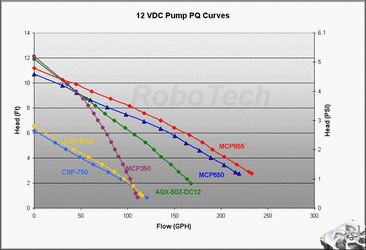loop = your watercooling system and all of the parts which it is comprised of (basically, when watercooling, you're creating a closed loop which water continually circulates through. Think of it like a video which has been looped, it plays the same thing over and over again... well, the water behaves like that video, circulating through the system over and over again)
fill/bleed = filling the system/loop with water and/or bleeding (draining) the water out of the system/loop. The term "bleeding" can also be applied to the removal of air from the loop.
barbs = the 'pointy bits' sticking out of waterblocks/other parts that you fit tubing over (Pictures!
here,
here, and
here on a block)
A T-line functions similarly to a reservoir except that it, imho, is easier to work with (and you don't have to worry about having a leaky reservoir). To give you more of a visual, you're basically inserting a t-fitting (one of
these ) immediately before the pump's inlet, you attach an extra section of tubing to the vertical barb on the t-fitting, and then proceed to fill the loop through that section of tubing. Once filling is complete, you cap the top of the tube (generally with a
fillport or some other suitable object--with 1/2" ID tubing, I've found that an inserted marble with a zip-tie on either side works great). This section of tubing, once capped, also doubles as a "reservoir" for extra coolant.
A heater core works the same way that a standard watercooling radiator does. Many prefer them because they preform
very well when used with shrouds and high CFM fans, plus they incur less pressure drop than many of the commercially available 'watercooling radiators'. They, however, are not the ideal solution for a quiet watercooling system. Oh, yeah... and heatercores are usually damn cheap.
Flow and pressure are two completely different things. If you are familiar with electricity and circuits at all, pressure is analogous to voltage and flow is analogous to current. Flowrate, usually measured in GPH, GPM, L/hour, or L/min, (Gallons Per Minute, Gallons Per Hour, Liters/hour, Liters/minute), is
very important for overall watercooling system performance--the higher your flowrate, the better the performance should get. Pressure, on the other hand, doesn't really affect system performance... unless you are referring to the flow restriction (pressure drop) of a particular component and how that will affect a particular pump's ability to sustain an acceptable flowrate. Basically, the higher the pressure drop a component has, the more restrictive it'll be, and it's this restriction which results in lower flowrates. Granted, flowrate isn't the be-all, end-all of performance... You'll get great flow through a Maze4 but, performance wise, a Storm at practically any flowrate will beat it. Clear as mud, right?

...and that took me
way too long to type... lol

